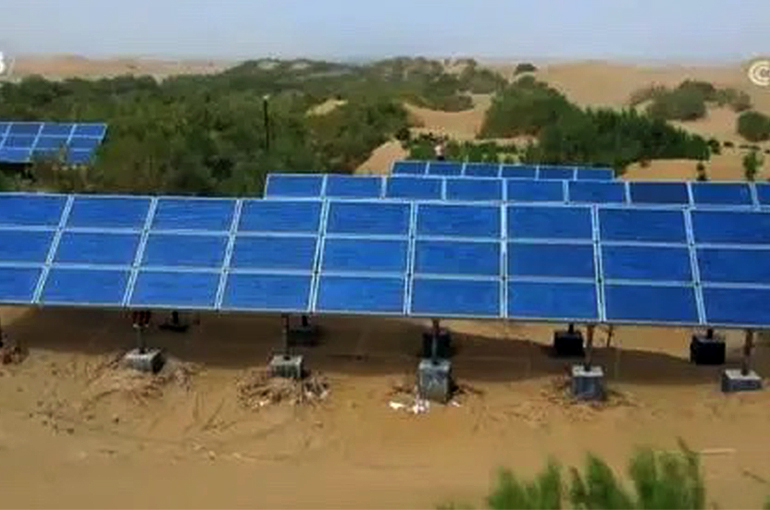 China's Longest Zero-Carbon Highway Has Produced Over 5 Million KWh of Green Power So Far
China's Longest Zero-Carbon Highway Has Produced Over 5 Million KWh of Green Power So Far(Yicai) June 11 -- The Tarim Desert Highway, which is China’s longest solar irrigation and desertification control project, has generated over 5 million kilowatt-hours of renewable electricity to-date, state broadcaster China Central Television reported yesterday.
Some 86 solar power stations with a capacity of 3.5 megawatts have been built along the highway, which traverses the Taklamakan desert in northwestern Xinjiang Uyghur Autonomous Region, replacing the diesel-powered generators needed to pump water for daily use and irrigation, the report said.
These plants produce around 3.6 million kilowatt-hours of electricity a year and are used to irrigate over 3,100 hectares of shelterbelt.
All 109 wells along the 522-kilometer-long highway use renewable energy for water pumping and irrigation, according to the deputy general manager of PetroChina Tarim Oilfield, through which the desert highway passes.
The project is saving around 1,000 tons of diesel a year and cutting greenhouse gas emissions by about 3,410 tons annually, said Meng Panlei, an electrical engineer at the new energy division of PetroChina Tarim Oilfield.
The Taklamakan Desert is almost devoid of vegetation as surface temperatures can reach over 70 degrees Celcius during the summer months. However, since the construction of the PV power stations, green plants have started to grow.
The PV panels also help reduce wind erosion and slow down shifting sands, according to the head of the project. The shade beneath the panels also significantly promotes growth.
The Tarim Oilfield has constructed four PV power stations with a total installed capacity of 1.3 million kilowatts in the center and along the fringes of the Taklamakan Desert. These four solar power stations have produced over 700 million kWh of green electricity so far.
The oilfield started building a new 1.3 million-kilowatt PV power plant on the northeastern edge of the Taklamakan Desert at the end of May. The project covers an area equivalent to 3,285 football fields. There are plans to install 2.7 million solar panels, capable of generating 2.1 billion kWh of electricity a year.
Editor: Kim Taylor